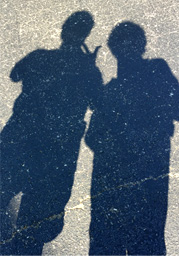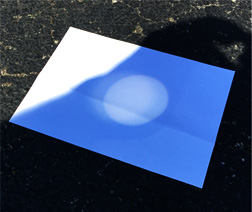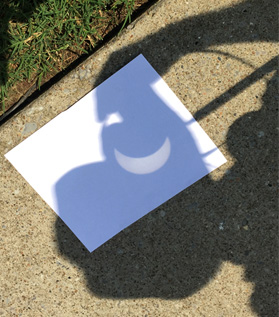Eclipse Trip
August 21, 2017
On Sunday, August 20, Rod and Brenda drove up to Nashville on Sunday after church to be in place for the total solar eclipse on Monday the 21st. It was an event that we had been reading about for more than a year. Brenda had made reservations at the Wyndham facility in Nashville near the Opryland Hotel.
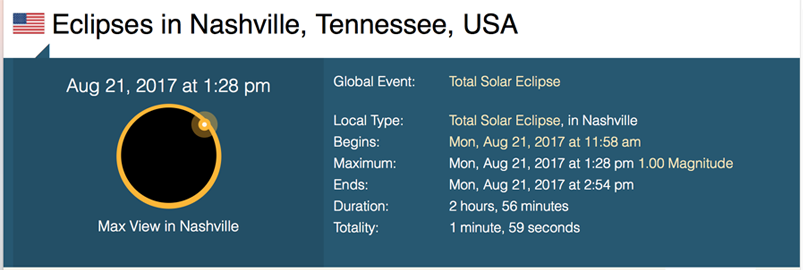
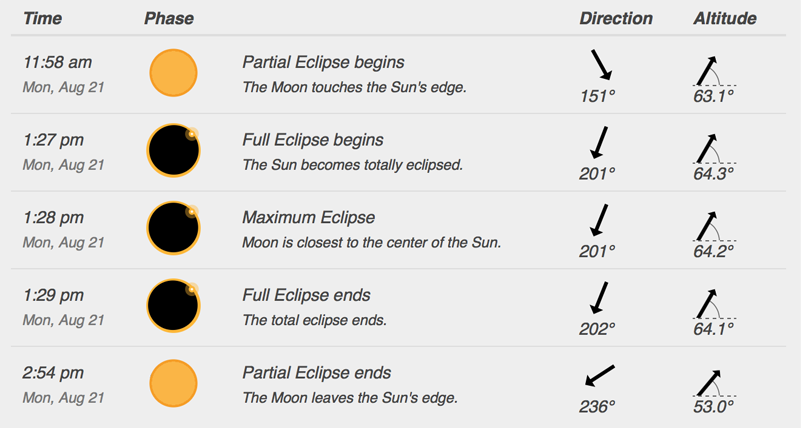
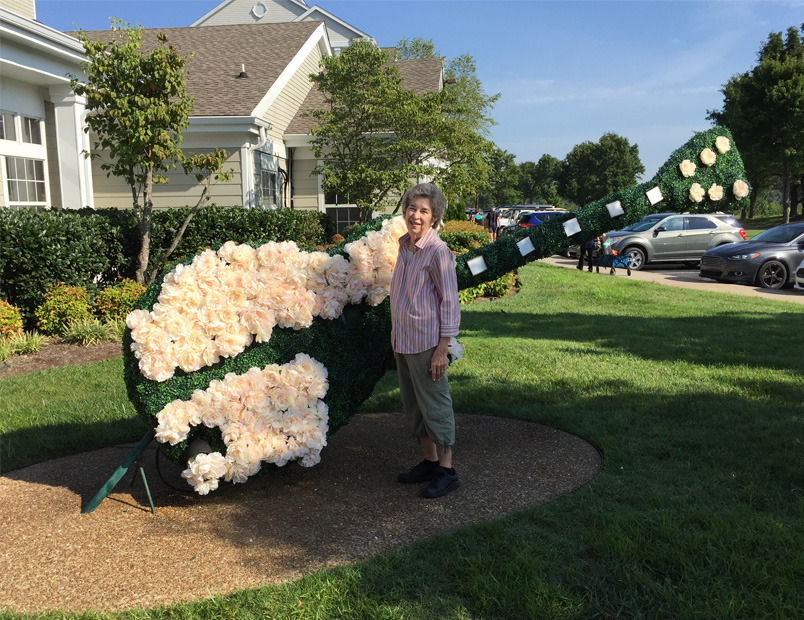
Our agenda on Monday morning was to make preparation for the viewing of the eclipse in the early afternoon. I had walked the property yesterday looking for places where we might get the crescent projections on the ground beneath trees, and one of the best candidates was a couple of trees near the big guitar marking the welcome center for Wyndham. So we got this photo on that scouting trip.
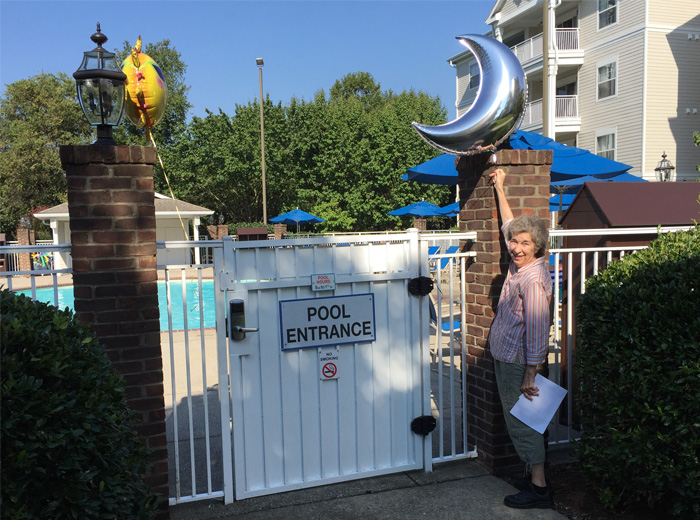 | We also checked out the pool where they were going to do the big eclipse party. One of the decorations was this crescent balloon. We thought there might be some good projections there at the pool. |
A nice lady came along and offered to take a picture of the two of us. | 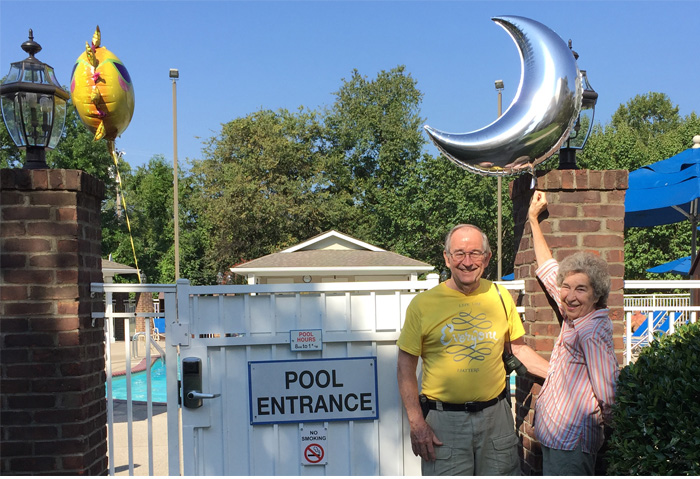 |
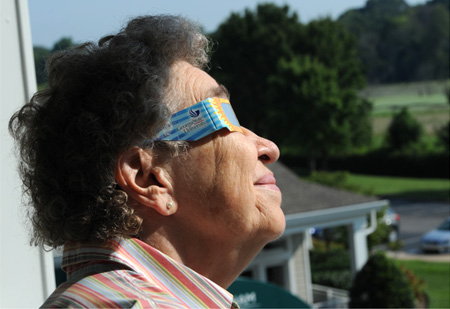 |  |
Our next task was to check out the eclipse glasses that I had gotten from the Georgia State University Physics and Astronomy office. They were impressive in that you could get a crystal sharp view of the Sun as a reddish perfect circle. The image at right was shot through the glasses with Brenda's phone. Throughout the day we could just look up through the glasses and see the crescent shape of the Sun as the eclipse proceeded.
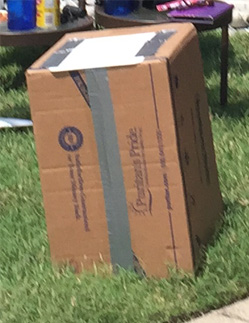 | 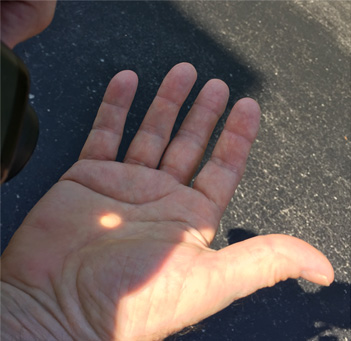 | I had made up a pinhole box with an 18" box and a pinhole of a little over a 1/16 of an inch. It projected a clear image but it was only like 3/8" so appeared small. It was useful and safe for letting the children next to us have a look from time to time. I turned the binoculars big-end-up and was able to project a larger image even on my hand a foot away, so I decided to go this way with the viewing. |
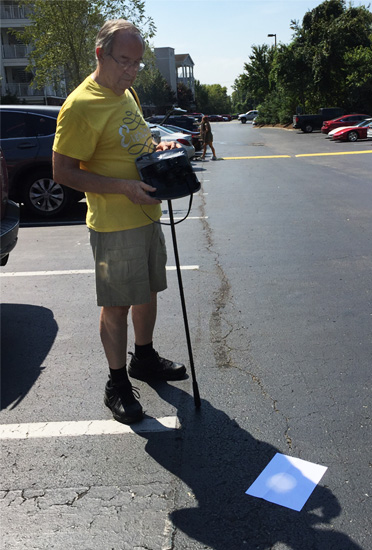 | I found that by holding the binoculars, I could project a reasonably sharp image of the Sun about 3-4" diameter on a sheet of paper on the ground. The only problem was that it was very difficult to find the image and almost impossible to hold it steady. |
 OK, orient for the smallest shadow of the binoculars to line them up with the Sun. Then position so shadow of fingertip is on center of binocular lens. Then rotate system so that it appears that the beam should be straight through the two lenses. Then hunt for the bright image close to the binoculars. It was still very difficult! |
 |
We worked at it until it appeared that we had a working process for viewing. The size of the image was quite pleasing - huge compared to what we got with the pinhole box! The double image you see above was due to the two lenses of the binoculars, but during viewing I kept my hand over one of them.
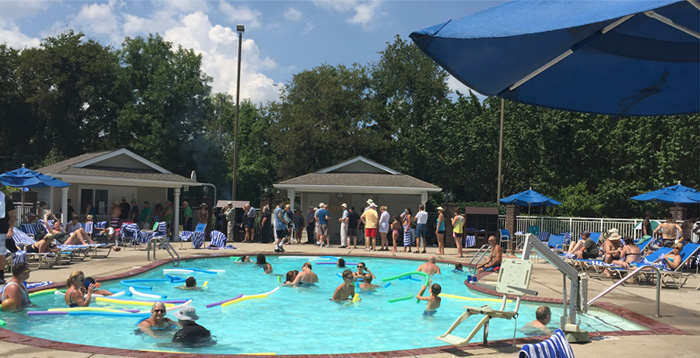 | With our viewing strategy set, we went back down to the pool where the big eclipse party was. They were lined up for hotdogs and hamburgers, and there was live music, etc. |
This wider setting shows the people gathered around in lawnchairs, etc. They had done an admirable job of setting up for the celebration. | 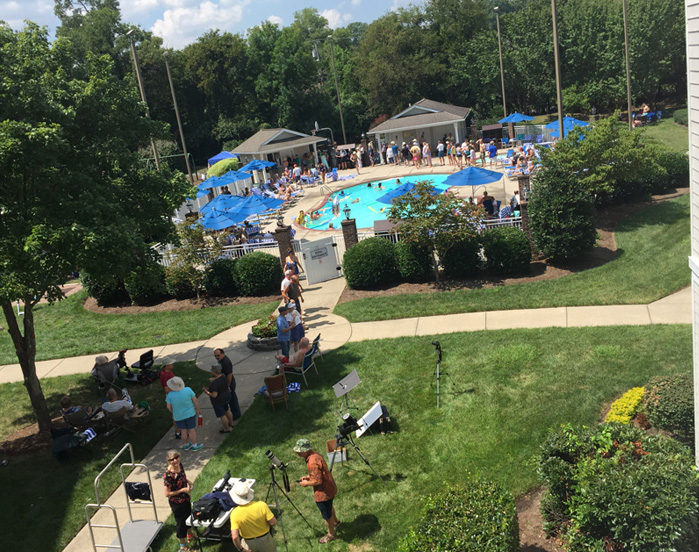 |
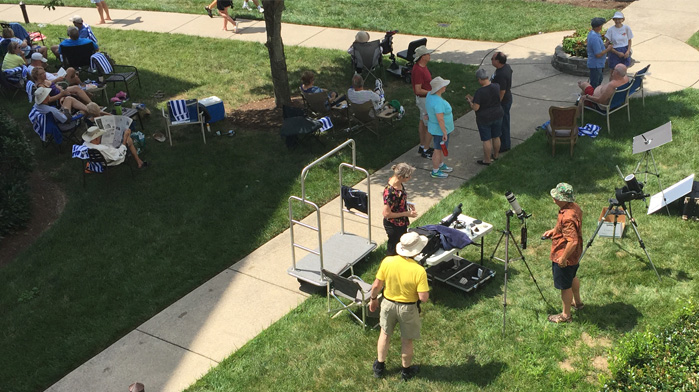 | We enjoyed talking with these California folks who had flown in from Los Angeles with three telescopes. |
It was really a nice time of celebration. People gathered in lawn chairs and stood around talking in groups. This pool location was in the middle of the two rows of three or four story housing units. | 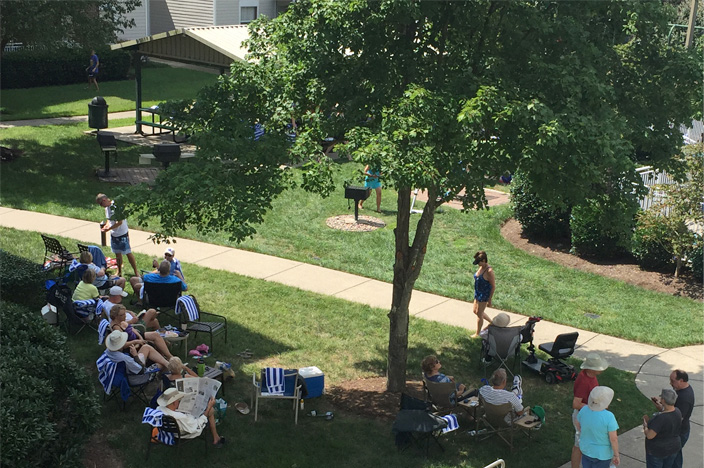 |
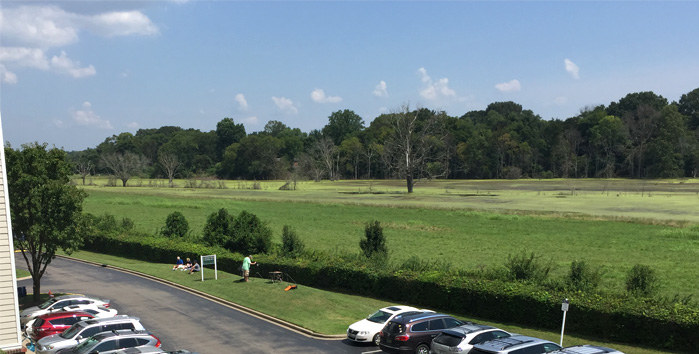 | On the east side of the buildings toward the marsh there was a long strip of grass and people were beginning to gather there as well for the viewing of the eclipse. |
With the eclipse starting at 11:58, this family group was gathered on the corner just below our room at about 12:30. The grandfather was a veteran of many eclipses and was giving commentary. They had their eclipse t-shirts and had binoculars with solar filters,so they were ready. I put my pinhole box there with them so maybe the kids might enjoy that. | 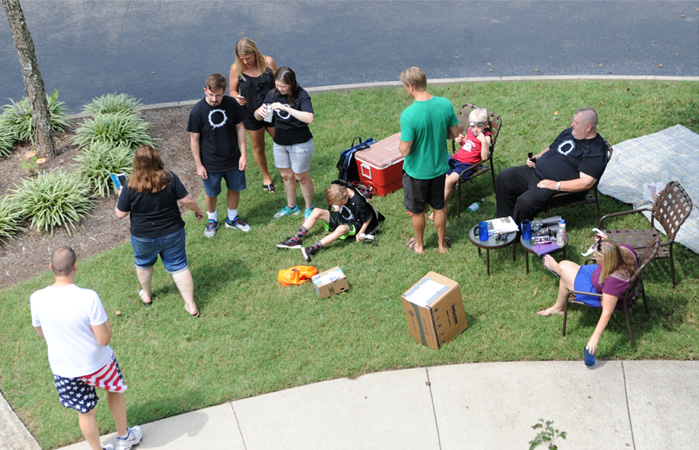 |
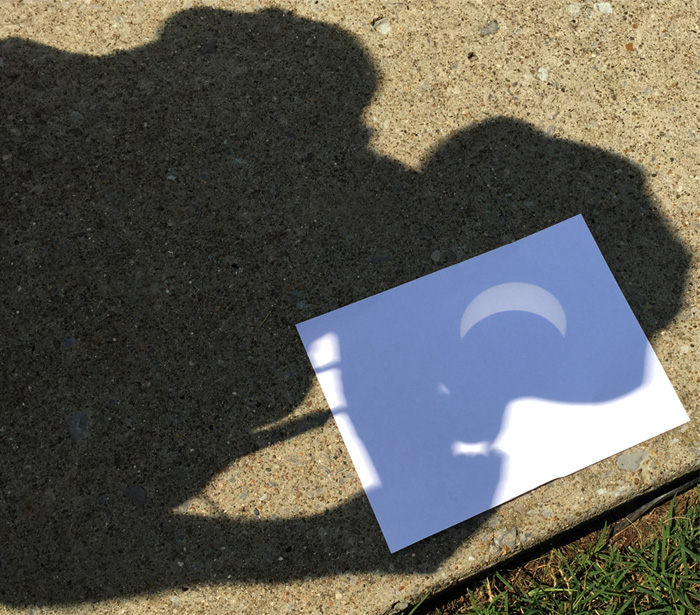 | At 12:59, 28 minutes before totality, the nice crescent is formed in the shadow of Rod's head on the sidewalk just below our room. |
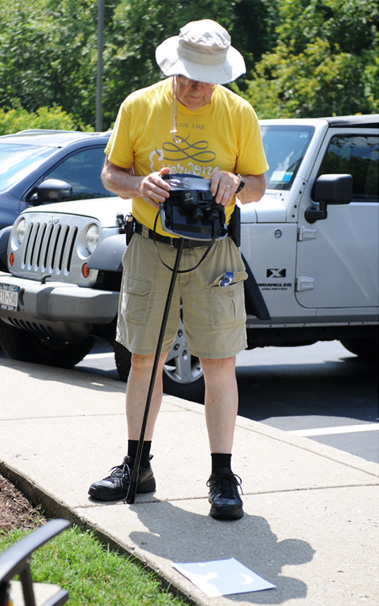 | 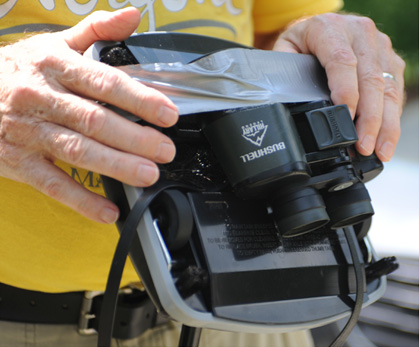
|
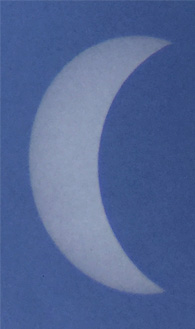 | 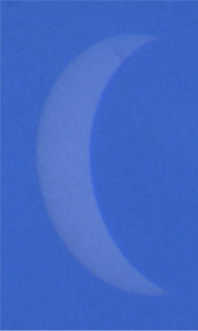 | 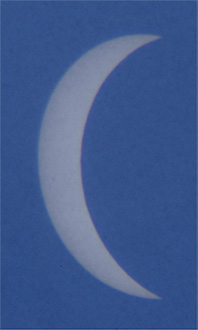 |  |
These images were obtained by photographing the projection through the binoculars onto the white paper. Using levels in Photoshop, the images were moved toward maximum use of the pixels, but the origin of the blue color is a mystery to me.
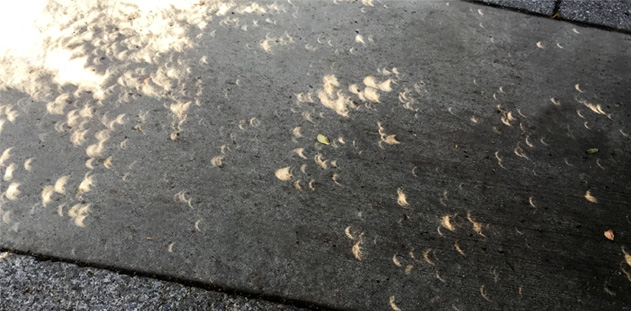 | At 1:19pm, 8 minutes from totality, Brenda went around to the crepe myrtle bushes we had identified as sources for crescents from the pinhole camera effect of openings through the leaves. She did get some narrow crescents on the sidewalk. People there asked her what she was doing, photographing the sidewalk.We didn't have many candidate trees because they trimmed all their trees high from the ground. |
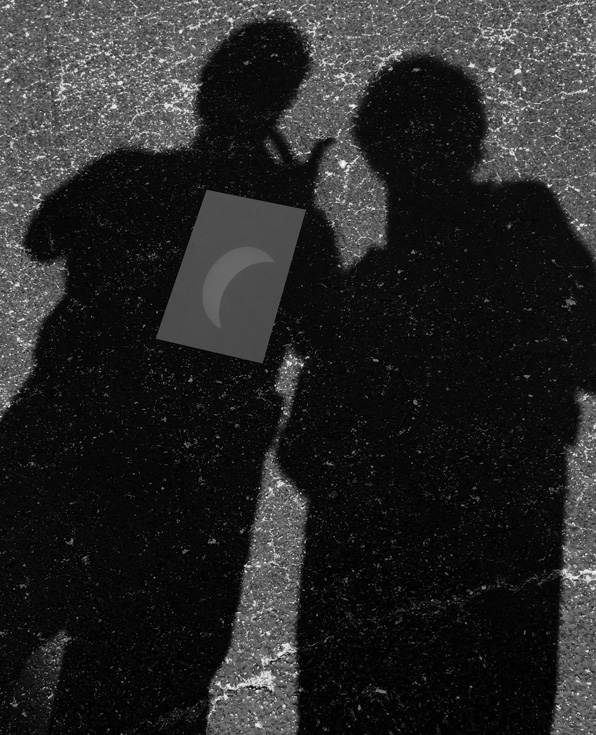 | We kind of liked the picture of the shadows of both of us above when we were aligning the binocular for viewing this morning. So I made up a composite image of that shadow with one of the real images of the eclipse while it was progressing toward totality. So both the images are real images that were taken on this day, but they were not taken together like this. |
At 1:20pm, 7 minutes from totality, this was the crescent as shot by Brenda's phone. I don't understand the red and blue lines on the crescent. | 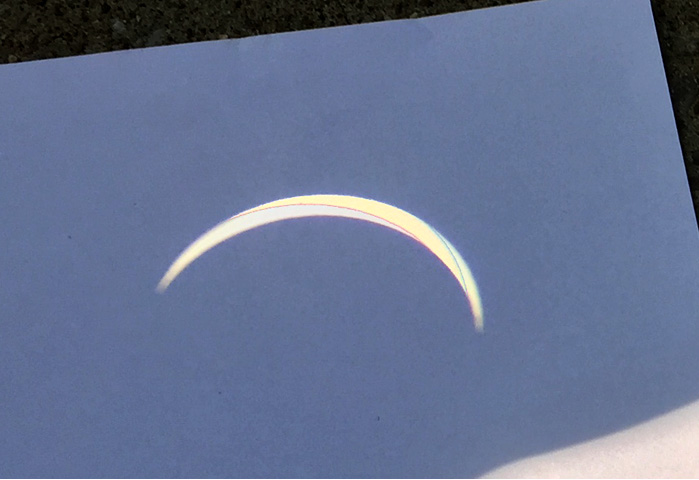 |
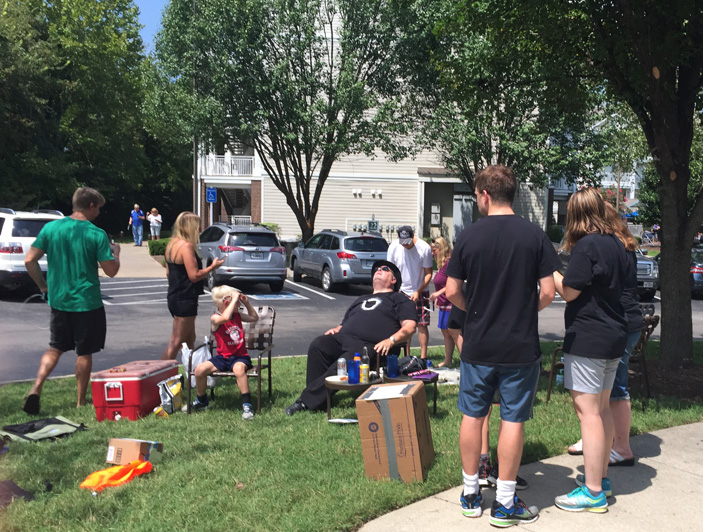 | At 1:20pm, 7 minutes from totality, this is the family group that was observing next to us. Notice how bright the area is with only 7 min to go! The grandfather had observed several eclipses and as I understood it, had organized one eclipse watching expedition to Peru some thirty years ago. I left my pinhole box over with them in hopes the children might enjoy it. |
At around five minutes from totality, this dense cloud front moved over the Sun, completely blocking it from view. There was a collective groan, but we kept watching. We saw the crescent begin to show through the cloud as it moved.
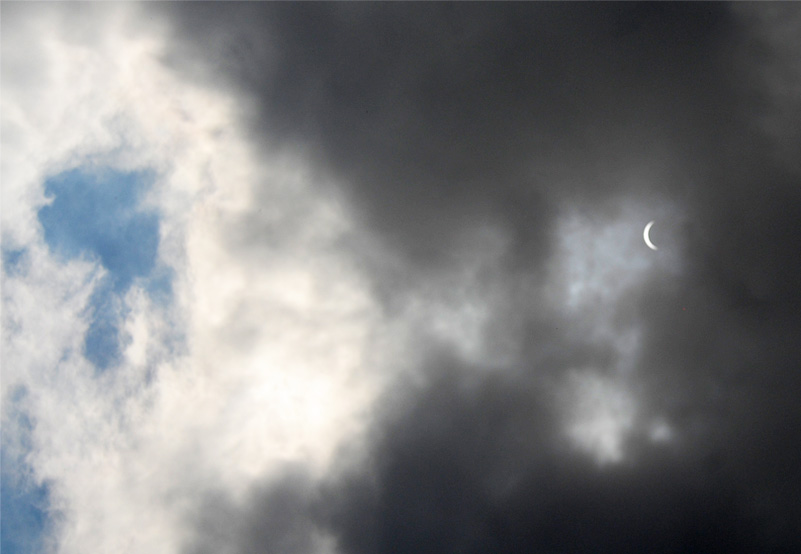
This was a disappointing, yet hopeful view since a moment before we could not see the Sun at all. Knowing that we were just minutes away from totality after watching the crescent get thinner for over an hour, this cloud was something we certainly didn't ask for.
This is a direct shot of the eclipsing sun through the cloud. Best time determination 1:24:19 or less than three minutes from totality. Shot f5.6, 1/400 s, 400ISO, 400mm. | 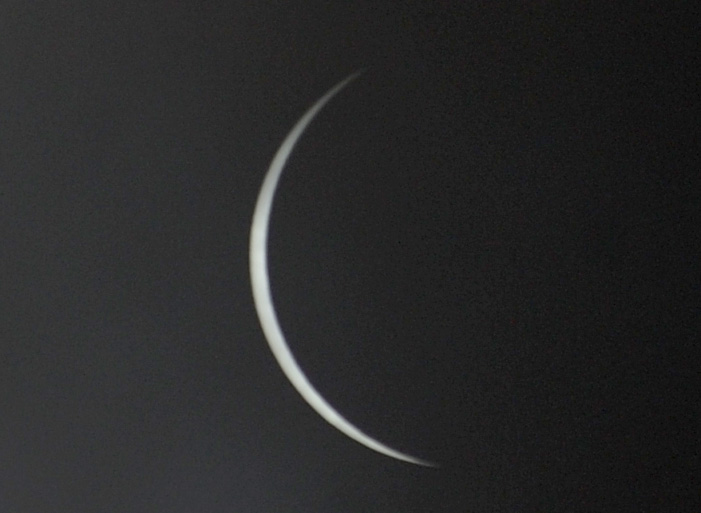 |
The day had been brilliant and clear all morning, but as we moved into the eclipse time clouds started forming. Just as we approached the time of totality at 1:27, a sizable cloud moved over the Sun's position and we thought we were done for. But the cloud thinned quickly and we were delighted to see the fully eclipsed Sun.
 | You might imagine our delight when the cloud cover cleared and we could see the image of total eclipse that we had anticipated. The Moon's opaque disc looked perfectly round and we could see the Sun's corona and a little bit of reddish flare activity. I extended the frame to show the star in the lower right corner. This was shot at f5.6, 1/400 sec, ISO 6400, 400mm telephoto. 1:27:30pm. |
Our disappointment at the cloud rolling over the Sun's position distracted us from the things you hear people talking about with the approach of the total eclipse. A matter of minutes earlier we had been in bright daylight, and even when we watched the Sun's exposed surface diminish from full to about a tenth of its area, our eyes adjusted so well that the tenfold drop in light was not that noticeable. But in this last couple of minutes, the light dropped dramatically and the street lights came on. Someone in the group claimed to have heard twilight bird sounds, and we did see martins flying, which tends to happen at twilight.
I got several shots in totality that showed essentially the same corona geometry. I believe the cloud had cleared a bit more, and this represents the geometry of the corona at this time, about 15 seconds into totality. It's a little puzzling that the same star shows in both of these photos, but another star further to the right and higher showed in some of the others but not in these. I'm guessing that wisps of cloud were sometimes obscuring one star and then the other. | 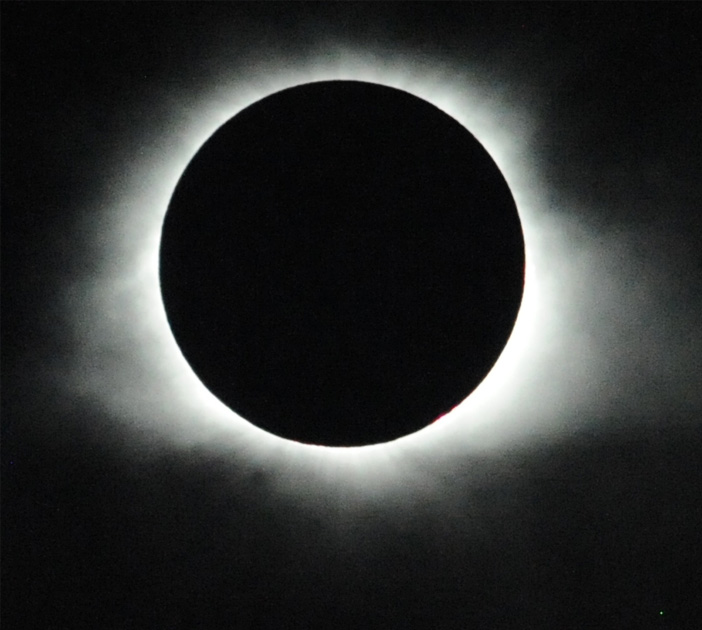 |
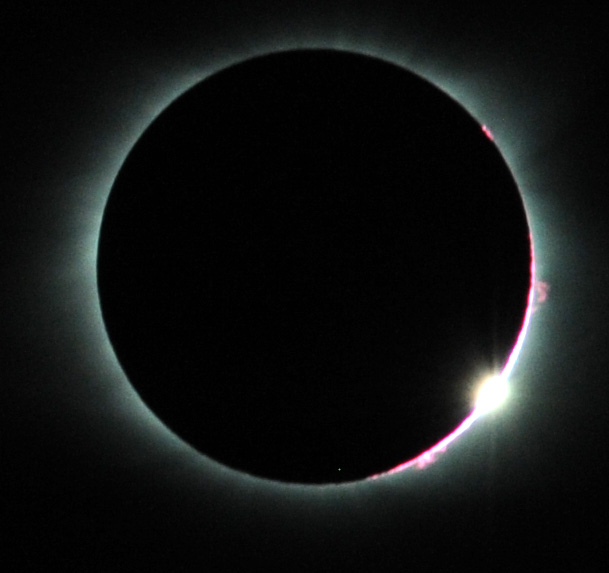 | This is the beginning of the "diamond ring" effect of the first departure from the total eclipse condition. The corona does not appear to be as prominent in this shot, but you can see the flares at 3pm and 5pm and another at about 2pm which had not been as visible. This is at about 1:29:20. This was shot at f18, 1/1000 sec with ISO 1600, so much reduced exposure. That accounts for the corona not being as bright, but it must mean that enough Sun surface was exposed to make the flares more prominent. The flare at 3pm on the circle scales to about 3% of the Sun's diameter, so that scales to about 42 thousand kilometers or about 26 thousand miles. |
A slightly different perspective of the diamond ring effect. This was more exposure with f5.6, 1/1000sec, ISO1600 so a little over two stops more exposure. This was about a second after the above photo. |  |
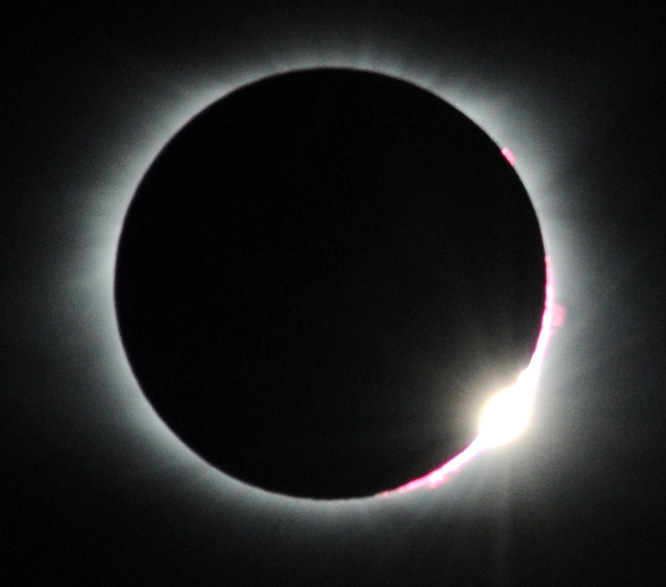 | One more shot of the diamond ring effect at f11, 1/1000s, ISO1600. The lower exposures give a better view of the reddish flares. |

This is at about 1:29:50 or about 30 seconds from the end of totality. At f6.3, 1/1000 s, ISO 1600 this is about the same exposure at the second photo above, so shows how dramatically the light increases at the end of totality.
| Nashville Visit |
2017
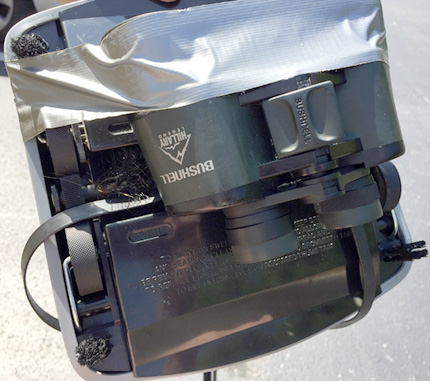 Having not brought a tripod, the best option I found was to duct-tape the binoculars to the bottom of a long-handled sweeper from our room. It was still extremely difficult to get the beam through the binoculars.
Having not brought a tripod, the best option I found was to duct-tape the binoculars to the bottom of a long-handled sweeper from our room. It was still extremely difficult to get the beam through the binoculars.